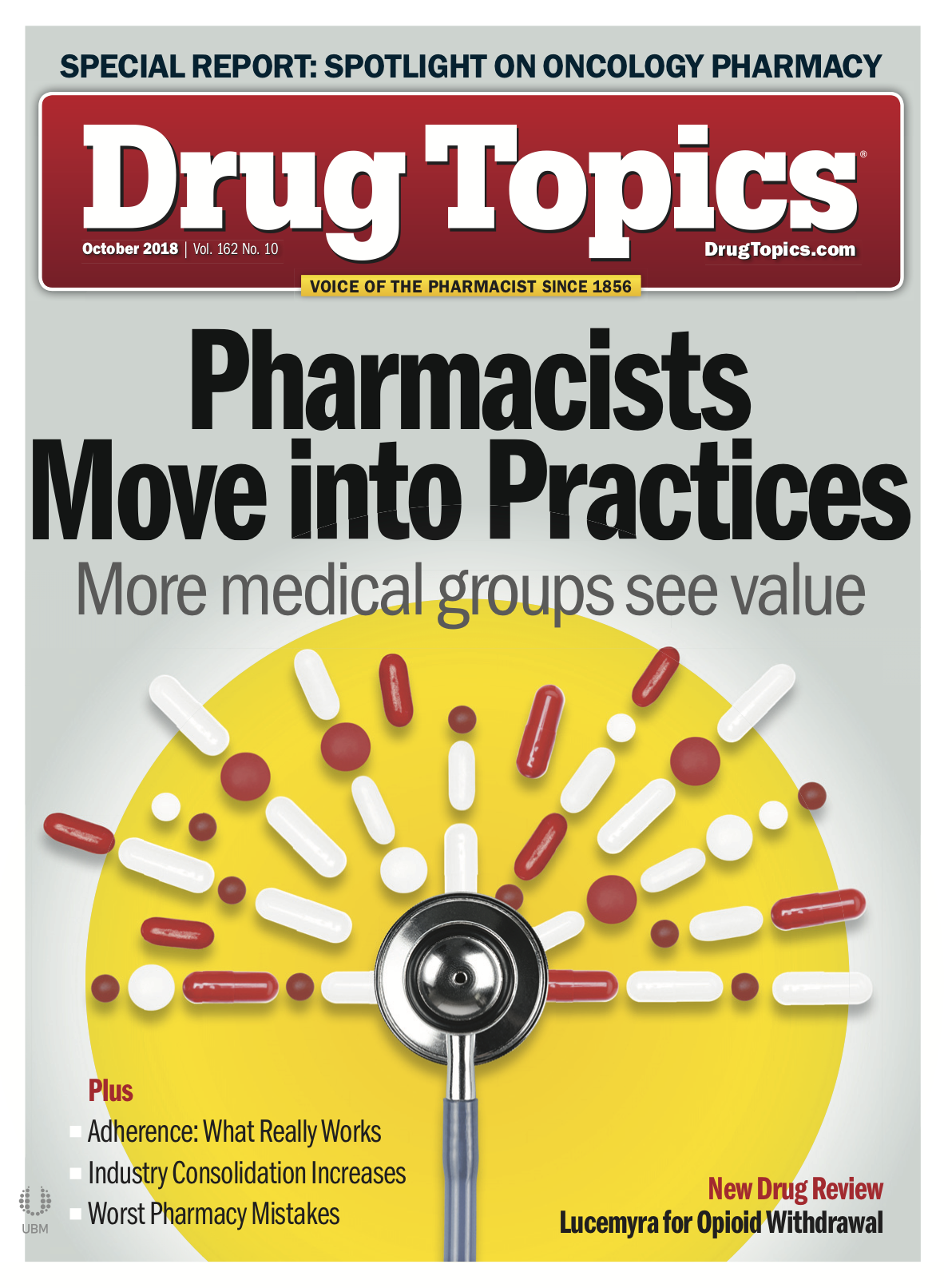The 4 Keys to Medication Adherence
What pharmacists need to do-and what you should avoid.

Medication nonadherence is a recurring challenge in the healthcare industry, and the consequences are alarming: Approximately 50% of all patients who have chronic illnesses do not take their medications as instructed, according to the World Health Organization. Nonadherence costs the U.S. healthcare system between $100 billion and $300 billion annually.
Many pharmacists and pharmacies routinely engage in adherence-improving practices such as medication synchronization, processing early refills, changing prescriptions to 90-day supplies, activating refill reminders, and deprescribing when appropriate.
Related article: Top 5 Medication Adherence Tools
While these tactics often prove helpful, they do not guarantee success. Norman Tomaka, BSPharm, MS, FAPhA, spokesperson for the APhA and clinical consultant pharmacist in ambulatory care, says getting a patient to successfully adhere to a medication program is not the result of any single tried-and-true strategy but rather a combination of “multifaceted solutions that fit the patient’s lifestyle as most productive.”
Here are some strategies to consider.
Practical, Adherent-Friendly Regimens
Pharmacists who focus on patient engagement are able to collect pertinent information that might positively alter the patient’s experience and medication regimen. Communication increases patient understanding, and improves the clinician’s ability to customize treatment in a way the patient finds more reasonable and therefore doable.
For Donney John, PharmD, executive director of NOVA ScriptsCentral in West Falls, VA, engagement starts with empathy.
“With medication adherence, people are overburdened with the number of medications they are taking, so don’t ask your patient to do anything you wouldn’t do. If I as an educated pharmacist cannot do it, how can I expect my severely ill patient to take multiple medications every day?” he says.
Tomaka is a huge proponent of face-to-face communication whenever possible. More personal interactions have been proven to optimize adherence, he says.
Cultural and Regional Considerations
Cultural habits and practices also enhance the patient experience. These may reach beyond race and ethnicity to include geographic trends or even the patient’s work environment.
Teresa Burks, PharmD, BCACP, pharmacist-in-charge at St. George Medical Center Pharmacy, part of Family Health Centers in St. George, SC, encourages pharmacists to familiarize themselves with their patient populations.
“Every area may be different and have their own uniqueness that you may want to emphasize as it relates to the patient experience and [action plan],” she says. “In St. George, the patients are very personable, so in addition to healthcare, they want to talk about things going on in their lives-almost like a family environment.”
Related article: The 8 Best Ways to Communicate with Patients
Some diseases present differently among races and cultures, but clinicians should also consider how perceptions of those illnesses vary among different groups. “In most African American and Latino cultures, getting an insulin prescription equals death because they don’t connect the dots between when the medication is started and the progression of the disease,” John points out.
John also feels gathering information about the patient’s employment and work schedule provides critical clues that help tailor the patient’s medication regimen. “Knowing what the person does for a living gives you an idea of how the medication fits into the patient’s life. If a person is a postman or a mail carrier, it would be easier for him to use an insulin pen than an insulin vial because it’s portable and the insulin can be delivered discretely.”
Technology’s Role
Alarm reminders help keep regimens front-of-mind, but experts caution that technologies such as software and apps are only appropriate for patients who are most likely to use them. John cautions against using most health apps, stating that the majority carry a three-month shelf life and are not designed with the end-user in mind.
Appropriate selection of adherence apps requires communicating with the patient to extract information that helps determine what will work best for them-whether that be medication synchronization or a text reminder, says Tomaka.
Related article: How to Prevent the Top 4 Medication Errors
While technology improves adherence in patients who are already avid users, he says it is a poor substitution for the nuances of human communication. “If you don’t communicate with your patient, the basic robotic functions will be replaced by technology, but I don’t know of a single robotic function that can connect with a patient and give them information that makes sense for their lifestyle,” says Tomaka.
Education: A Delicate Balancing Act
Offering clear, concise, and actionable communication regardless of additional strategies enacted is the most important element to help patients better manage their medication regimen. “Communication is a two-way street-a dialogue,” Burks says.
Despite emphasizing the significance communication carries in improving the patient experience, there is a delicate balance between sufficient communication and over-communication, John says. “When we over-educate, we make the medication regimen more complex, so we need to break it down to a basic level,” John cautions.
